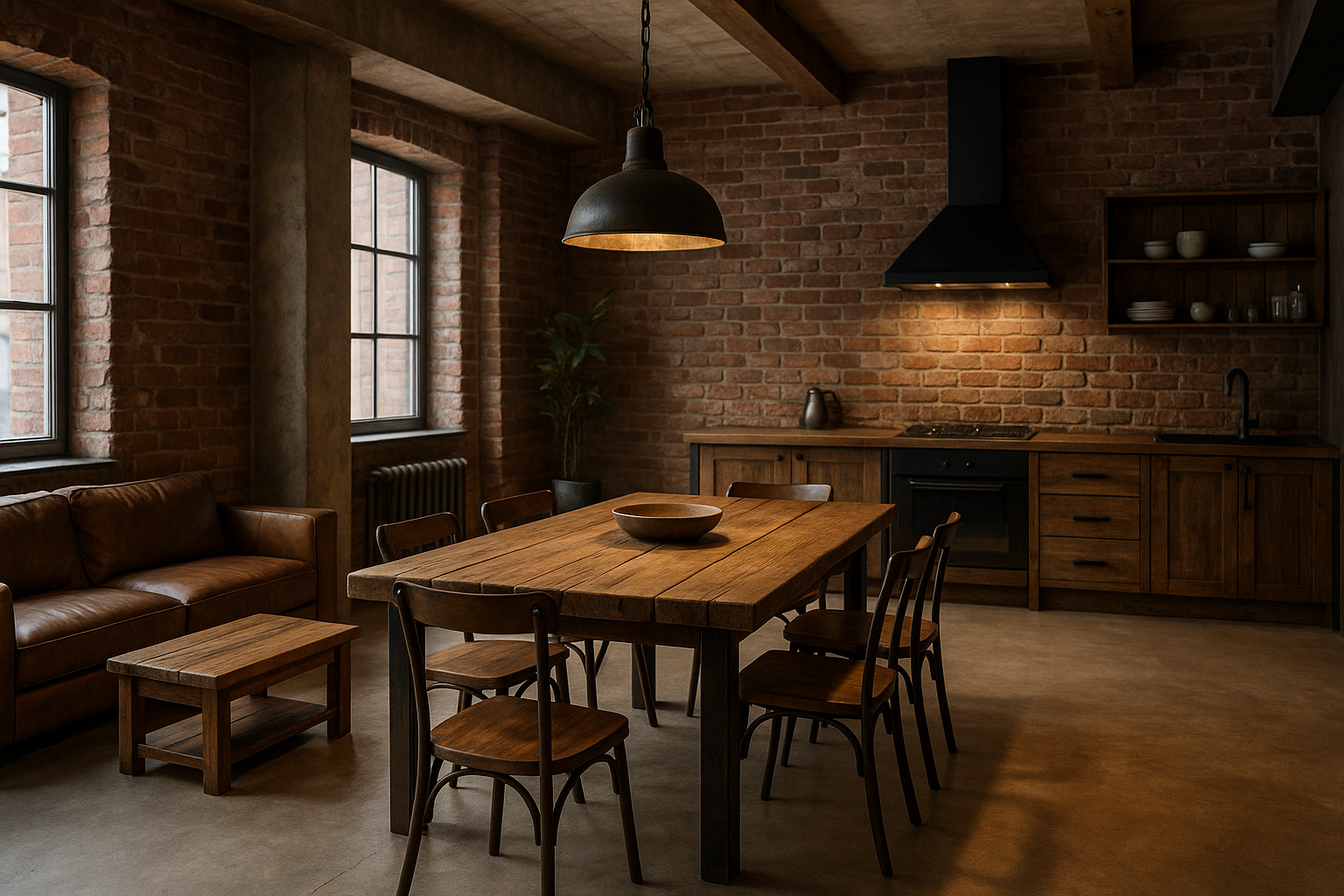Interior Design Trends 2025: Style Ideas Shaping UK Homes
In 2025, interior design in the UK is all about blending function with personality. Homeowners are shifting toward warmer tones, natural materials, and smarter layouts that reflect comfort, sustainability, and elegance. From multi-functional furniture in compact flats to statement lighting and bold wall textures, British homes are being transformed into stylish yet livable spaces. Biophilic design — which brings nature indoors — continues to rise, along with earthy colour palettes and vintage-inspired details. With more people working from home, dedicated and beautifully designed workspaces have also become essential. Whether you're redecorating a single room or refreshing your entire home, the latest trends offer inspiration for every lifestyle and budget

What Are the Key Interior Design Trends in the UK for 2025?
The interior design landscape in the UK for 2025 is characterised by a fusion of comfort, sustainability, and technology. Biophilic design continues to gain momentum, bringing nature indoors through the use of organic materials, plants, and natural light. Smart home integration is becoming more seamless, with tech-enabled furniture and appliances designed to blend effortlessly with aesthetic elements.
Multifunctional spaces are also at the forefront, as more Britons adapt to flexible work arrangements. Rooms that can transition from home offices to entertainment areas are in high demand, driving innovations in modular furniture and clever storage solutions.
Which Colour Palettes Are Making a Comeback This Year?
2025 sees a return to warmer, more comforting colour schemes in UK homes. Earthy tones such as terracotta, ochre, and sage green are gaining popularity, creating cosy and grounding environments. These are often paired with soft neutrals like off-white and beige to maintain a sense of balance and airiness.
Bold accent colours are also making a statement, with deep jewel tones like sapphire blue and emerald green adding depth and sophistication to spaces. The key is to use these richer hues thoughtfully, perhaps on a feature wall or through statement furniture pieces, to avoid overwhelming the senses.
How Is Functional Furniture Adapting to Modern Urban Living?
In response to the challenges of urban living, where space is often at a premium, furniture designers are prioritising functionality without compromising on style. Modular sofas that can be reconfigured to suit different needs are becoming increasingly popular. Storage ottomans, beds with built-in drawers, and expandable dining tables are all examples of how furniture is evolving to maximise space efficiency.
Another trend is the rise of ‘smart’ furniture, equipped with charging ports, integrated lighting, or even voice-activated features. These pieces cater to the tech-savvy homeowner while maintaining a sleek and uncluttered appearance.
What’s the Best Way to Mix Vintage and Contemporary Styles?
The art of blending vintage and contemporary styles is set to be a defining feature of UK interiors in 2025. This approach allows homeowners to create unique, personalised spaces that tell a story. The key is to find a balance between old and new elements.
One effective strategy is to use vintage pieces as statement items within a more modern setting. For example, a mid-century modern armchair can become a focal point in a room with contemporary sofas and minimalist decor. Alternatively, modern art can add a fresh perspective to a room filled with antique furniture.
How Are Eco-Friendly Materials Shaping British Interiors?
In 2025, sustainability is not just a buzzword but a fundamental aspect of interior design in the UK. Homeowners are increasingly seeking out eco-friendly materials that reduce their environmental impact without sacrificing style or comfort.
Reclaimed wood is being used for everything from flooring to furniture, adding character and reducing deforestation. Recycled plastics are finding new life as stylish and durable textiles for upholstery and rugs. Natural fibres like organic cotton, hemp, and bamboo are preferred for their low environmental impact and hypoallergenic properties.
Additionally, low-VOC paints and finishes are becoming the norm, ensuring healthier indoor air quality. These eco-conscious choices reflect a broader shift towards responsible consumption and a desire to create homes that are both beautiful and sustainable.
What Are the Cost Implications of These Design Trends?
Embracing the latest interior design trends can vary significantly in cost, depending on the scale of the project and the materials chosen. While some eco-friendly options may have a higher upfront cost, they often prove more economical in the long run due to their durability and energy efficiency.
Here’s a comparison of some popular design elements and their estimated costs:
| Design Element | Provider/Brand | Estimated Cost Range |
|---|---|---|
| Smart Modular Sofa | Made.com | £1,500 - £3,000 |
| Reclaimed Wood Dining Table | Rust Collections | £800 - £2,500 |
| Eco-Friendly Paint (5L) | Little Greene | £70 - £100 |
| Vintage Mid-Century Armchair | Vinterior | £300 - £1,200 |
| Smart LED Lighting System | Philips Hue | £150 - £500 |
Prices, rates, or cost estimates mentioned in this article are based on the latest available information but may change over time. Independent research is advised before making financial decisions.
In conclusion, the interior design trends shaping UK homes in 2025 reflect a desire for spaces that are not only aesthetically pleasing but also functional, sustainable, and personal. By incorporating elements of nature, embracing smart technology, and mixing old with new, homeowners can create living environments that are both on-trend and timeless. Whether opting for bold colour choices or investing in eco-friendly materials, the key is to create a space that resonates with your personal style while adapting to the evolving needs of modern life.




